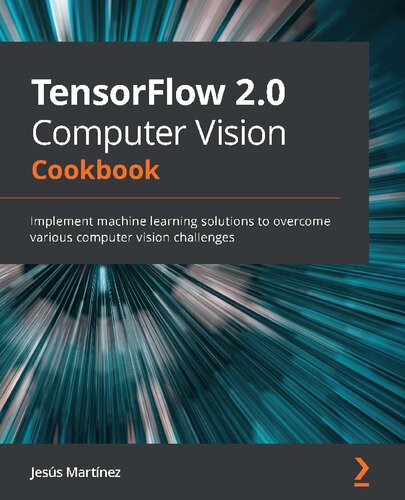

Most ebook files are in PDF format, so you can easily read them using various software such as Foxit Reader or directly on the Google Chrome browser.
Some ebook files are released by publishers in other formats such as .awz, .mobi, .epub, .fb2, etc. You may need to install specific software to read these formats on mobile/PC, such as Calibre.
Please read the tutorial at this link: https://ebookbell.com/faq
We offer FREE conversion to the popular formats you request; however, this may take some time. Therefore, right after payment, please email us, and we will try to provide the service as quickly as possible.
For some exceptional file formats or broken links (if any), please refrain from opening any disputes. Instead, email us first, and we will try to assist within a maximum of 6 hours.
EbookBell Team

4.8
64 reviewsGet well versed with state-of-the-art techniques to tailor training processes and boost the performance of computer vision models using machine learning and deep learning techniques
Key FeaturesComputer vision is a scientific field that enables machines to identify and process digital images and videos. This book focuses on independent recipes to help you perform various computer vision tasks using TensorFlow.
The book begins by taking you through the basics of deep learning for computer vision, along with covering TensorFlow 2.x's key features, such as the Keras and tf.data.Dataset APIs. You'll then learn about the ins and outs of common computer vision tasks, such as image classification, transfer learning, image enhancing and styling, and object detection. The book also covers autoencoders in domains such as inverse image search indexes and image denoising, while offering insights into various architectures used in the recipes, such as convolutional neural networks (CNNs), region-based CNNs (R-CNNs), VGGNet, and You Only Look Once (YOLO).
Moving on, you'll discover tips and tricks to solve any problems faced while building various computer vision applications. Finally, you'll delve into more advanced topics such as Generative Adversarial Networks (GANs), video processing, and AutoML, concluding with a section focused on techniques to help you boost the performance of your networks.
By the end of this TensorFlow book, you'll be able to confidently tackle a wide range of computer vision problems using TensorFlow 2.x.
What you will learnThis book is for computer vision developers and engineers, as well as deep learning practitioners looking for go-to solutions to various problems that commonly arise in computer vision. You will discover how to employ modern machine learning (ML) techniques and deep learning architectures to perform a plethora of computer vision tasks. Basic knowledge of Python programming and computer vision is required.
Table of Contents